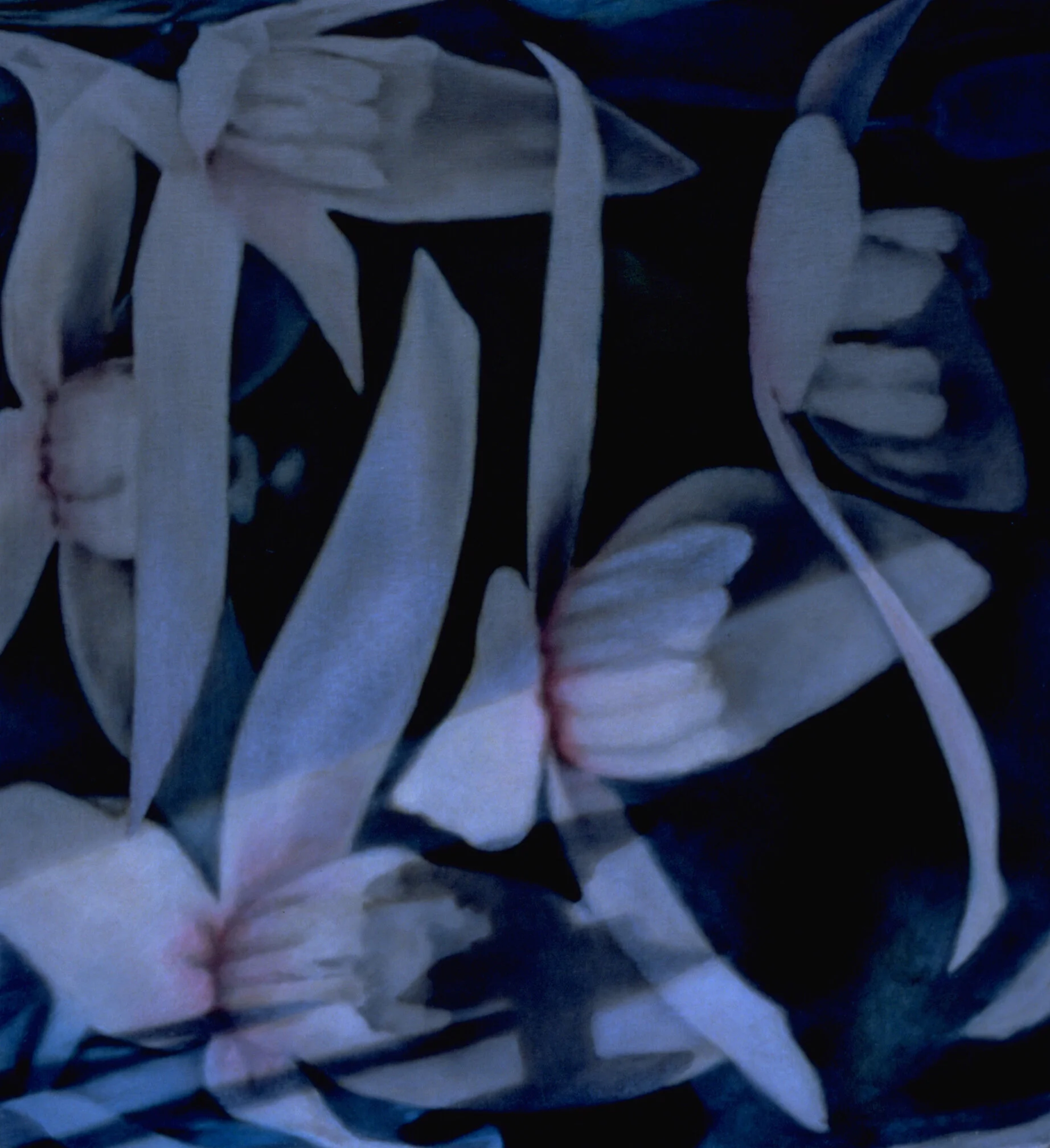Skylight
The inherent unreality of the material world has always been a central theme of Bill Newman's painting. Using traditional painting techniques such as glazing color over tonal grisaille underpaintings, Newman explores what happens on the fringes of perception – that moment when we turn to look at a sudden commotion, when speed, blurring vision, creates new forms, or how the addition or subtraction of light can introduce certainty as well as doubt into our understanding of the temporal world we daily take for granted. Newman's last series of paintings used computer-generated images of figures that, bent and stretched by the mechanisms of virtual reality, strongly suggested the anamorphic symbolism of Holbein's Ambassadors. His most recent paintings, accomplished over the past four years, are much more naturalistic in their origins. The work in Newman's Skylight series are overtly beautiful, lusciously painted pictures of flowers. Depicted floating in pools of water or isolated in space, they are, quite literally, larger-than-life essays on the seductive nature of the inherent beauty of the physical world. But more is going on here than first meets the eye, as there always is in Newman's art. Bisecting these carnal fields of color are depictions of light and shadow; across the idealized surfaces of his flowers, the artist has asserted the true temporal reality of nature, in the form of the shifting patterns of light cast daily by his studio skylights. Occasionally this marriage of painted light and image becomes openly symbolic; in Painting Ten, Skylight Three, the cast light is rendered as two encircling collars overlaid on two fuchsia painted in blue and violet.
Painting One, Skylight Ten
1995, oil on canvas, 25” x 33”
Newman's tableaux encapsulates the ebb and flow of passion, from the charged full bloom of eroticism to the more orderly overlay of domestic custom. In Painting One, Skylight Ten, the disturbing shadow of a bird (Newman's own parrot Spy, one of his studio companions) is an unsettling interlocutor that intrudes upon the floral celebrations that take place center stage. Is Newman visually paraphrasing Poe, reminding us that beauty, once issued, shall never again attain purity of form or spirit? More likely, he is, in his matter-of-fact way, recording the intersection of artifice and reality that is the constant and natural terrain of any artist's studio. But whether openly symbolic or seemingly naturalistic, as in Painting Nine, Skylight Two, Newman's flower paintings operate in the tradition of Dutch still life, where, in addition to being beautiful, an abundance of the material world painted to its fullest perfection was also an admonition on the impertinence of survival. Newman's Skylight series, like all great memento mori, seduce us in order to remind us to "Let those who have abundance remember that they are surrounded with thorns, and let them take great care not to be pricked by them."
by Christopher French
Painting Ten, Skylight Three
1995, oil on canvas, 36” x 60”










